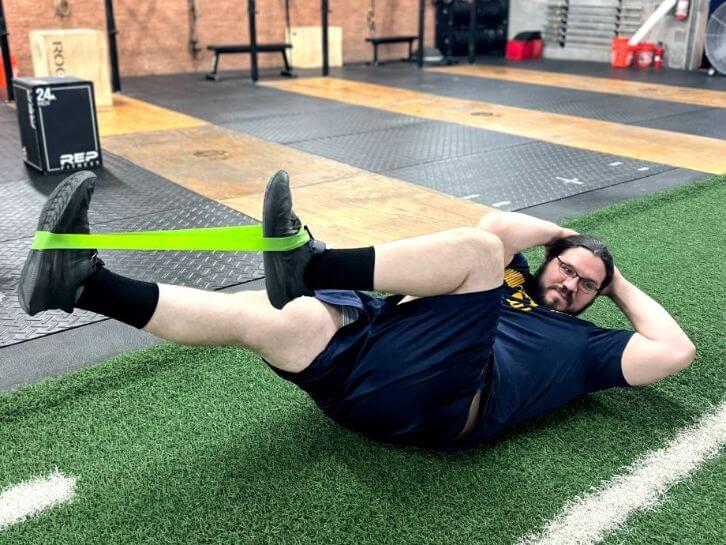We test and review fitness products based on an independent, multi-point methodology. If you use our links to purchase something, we may earn a commission. Read our disclosures.
The rectus abdominis, or “six-pack” muscles, likely get all the love in your core workout. Do you know what doesn’t get a lot of love? If you guessed the obliques, collect $200 as you pass GO. The obliques need some attention, too.
RELATED: Ab Roller Core Workout
This is about to change with the exercises below that you can use to create oblique workouts.
The obliques, which run beside the abs, are important core muscles that are often forgotten about when people are focused on building a ripped and muscular core. But after you read about the oblique exercises below, you’ll be ready to strengthen them in your abs workout, right?
Then let’s get to it.
Oblique Muscles and Functions Explained
The obliques are actually two muscles: the internal and external obliques. They run beside your rectus abdominis muscles from the hips to the rib cage. The external oblique starts from the external surfaces of ribs five through 12 and inserts around the pelvis.
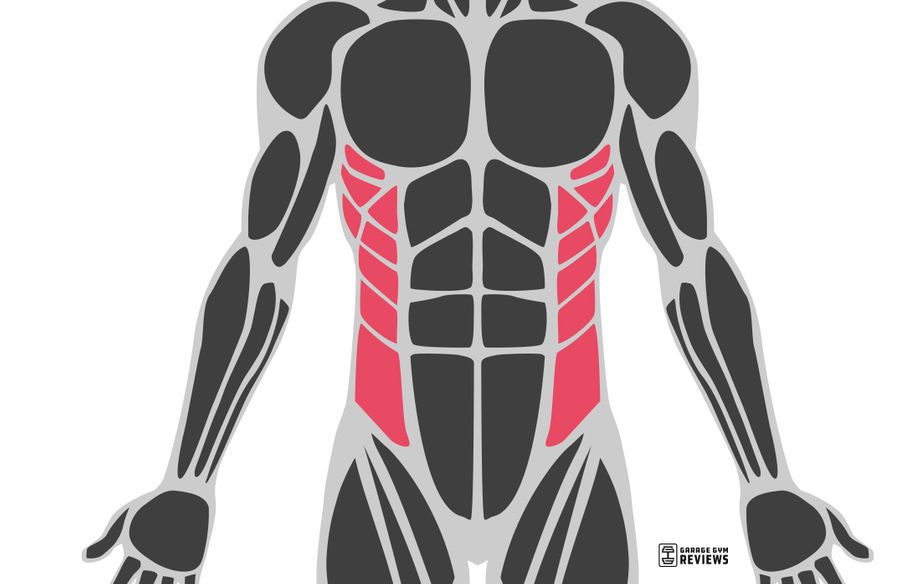
The internal obliques run under the external obliques, and their muscle fibers travel perpendicular to each other. Internal obliques originate from the Iliac crest (pelvis) and the lower back fascia and insert on ribs 10 through 12. The oblique muscles’ five primary functions are:
- Spinal Flexion
- Lateral flexion/Anti-Lateral Flexion
- Rotation/Anti-Rotation
But the oblique muscles really make money by protecting your lower back from rotation, known as anti-rotation. This is why the oblique muscles are commonly called anti-rotation muscles.
Oblique Strengthening Benefits
When you focus on your obliques, you can expect the following benefits.
Reduced Lower Back Pain
Since the obliques are attached to the spine, their strength can help take the pressure off your vertebrae, discs, and other core muscles to reduce your chances of suffering from a sore lower back.
RELATED: Best Ab Exercises
Better Posture
Almost all abdominal muscles in and around the spine play a role in posture, and the obliques are no different. If the obliques are weak and fail to support your spine, other muscles pick up the slack, affecting good posture.
Improved Balance
If you wobble from side to side when you walk, bend over, or stand, weak obliques may be the reason. Because lateral flexion is an essential oblique function, so is anti-lateral flexion. The stronger your obliques are, the steadier you are when standing and moving, improving your balance.
Best Oblique Exercises
Your oblique muscles will be neglected no more with the following core exercises that focus on your overlooked obliques to really help you build a strong core.
Side Plank with Arm Reach
Why it’s great: The side plank strengthens your obliques and shoulder stabilizers. Adding movement with the arm reach makes your obliques work harder, too.
How to do it:
- Lie on your left side with your weight resting on your elbow. Your left elbow should be directly underneath your left shoulder and your legs stacked on each other.
- Engage your glutes, lift your hips, and push your left elbow into the ground to push yourself up into the side plank position, keeping a neutral spine.
- Raise your right arm over your head, then bring it down and reach under your body before you return to the starting position. Try to keep your hips stacked and avoid twisting too much.
- Reset and repeat for desired reps or for time.
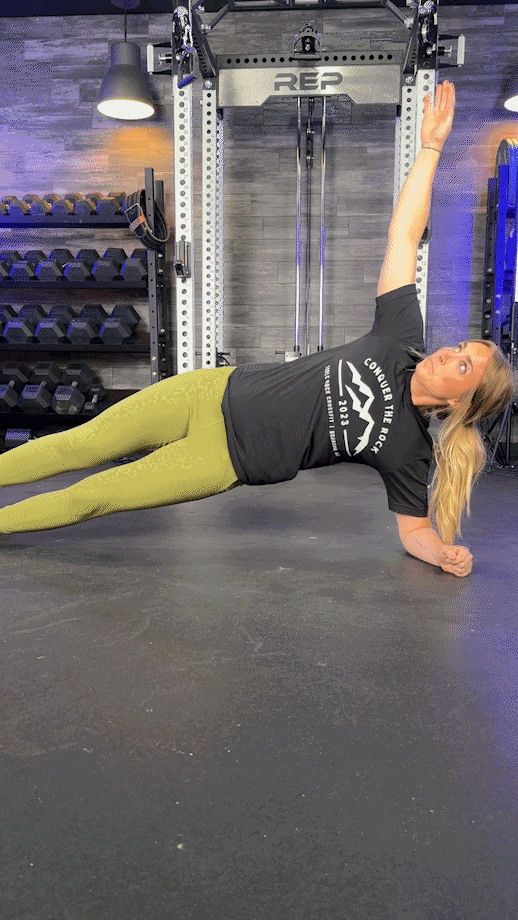
Heel Taps
Why it’s excellent: Heel taps are an easy exercise to learn, are spine friendly, and directly target the obliques.
How to do it:
- Lie on your back with your knees bent, feet flat on the ground, and arms down by your sides.
- Perform a slight crunch and bend to the side slightly to reach your right hand to touch your right ankle.
- Return to the starting position and repeat with the left side.
- That is one rep. Keep alternating sides for desired repetitions.
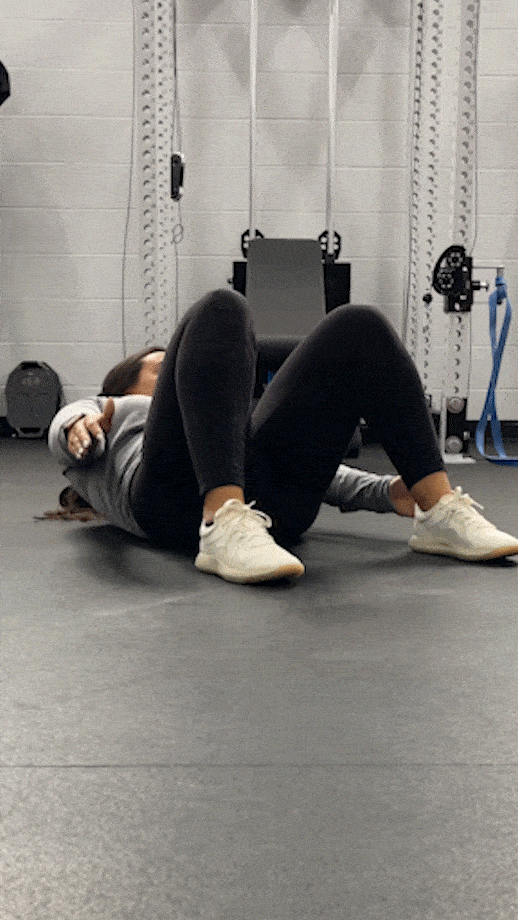
Cross-Body Mountain Climber
Why it’s great: The cross-body mountain climber is an exercise that targets the entire core area, and when done with speed, this exercise is great cardio, too. The cross-body part engages the obliques, hip flexors, rectus abdominis, and upper body strength with the chest, shoulders, and triceps.
How to do it:
- Set up in the push-up plank position, with your hands underneath your shoulders, and engage your glutes to keep your body straight.
- Drive your right knee toward your left elbow while maintaining the plank position.
- Return your right foot to the ground and repeat with the left knee to the right elbow.
- Keep alternating sides for even reps or for time.
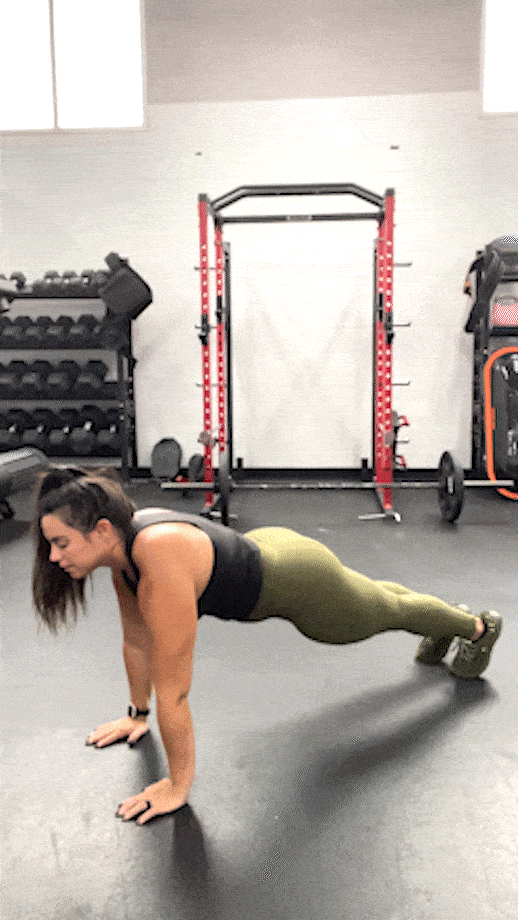
Bicycle Crunches
Why it’s great: Bicycle crunches are a great all-around ab exercise because they strengthen the upper and lower abs and require good coordination to perform well.
How to do it:
- Lie face up on the ground with both legs extended and your toes pointed at the ceiling.
- Place both hands behind your ears and lightly grip the back of your head.
- Twist to your right side, bringing your right elbow and your left knee toward each other simultaneously. Return to the starting position.
- Twist to your left, bringing your left elbow toward your flexed right leg, then return to the starting position.
- Alternate side for an even number of repetitions. Your legs should look like they are riding a bike.
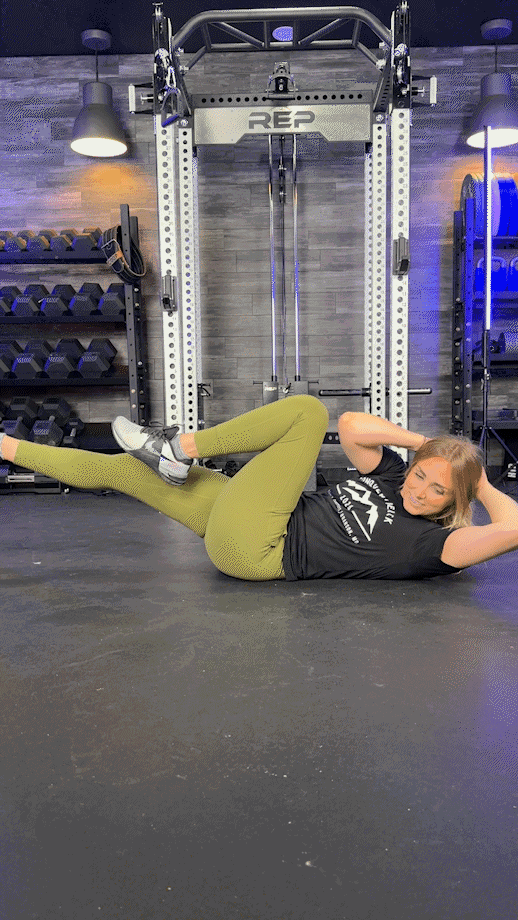
Dumbbell Suitcase Carry
Why it’s great: The dumbbell suitcase carry strengthens the obliques due to anti-lateral flexion and strengthens grip imbalances between sides. It also works the shoulders and glutes, making an excellent full-body exercise.
RELATED: Best Dumbbells
How to do it:
- Grip a dumbbell weighing 25-50% of your body weight in your left hand.
- Ensure your shoulders are even and your chest is up.
- Walk for 40 yards with good posture, then switch sides and repeat.
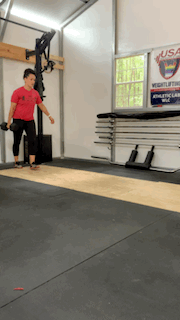
Standing Oblique Crunch
Why it’s great: Because you’re taking one foot off the ground while performing a side crunch, the standing oblique side crunch trains the side abs and single-leg balance.
RELATED: Bodyweight Workouts
How to do it:
- Stand with your feet shoulder-width apart and place your hands behind your head.
- Bend to the left side as you lift your left leg up, bringing your left elbow and your left knee together.
- Return to the starting position and repeat.
- Do all the repetitions on one side before repeating on the other side.
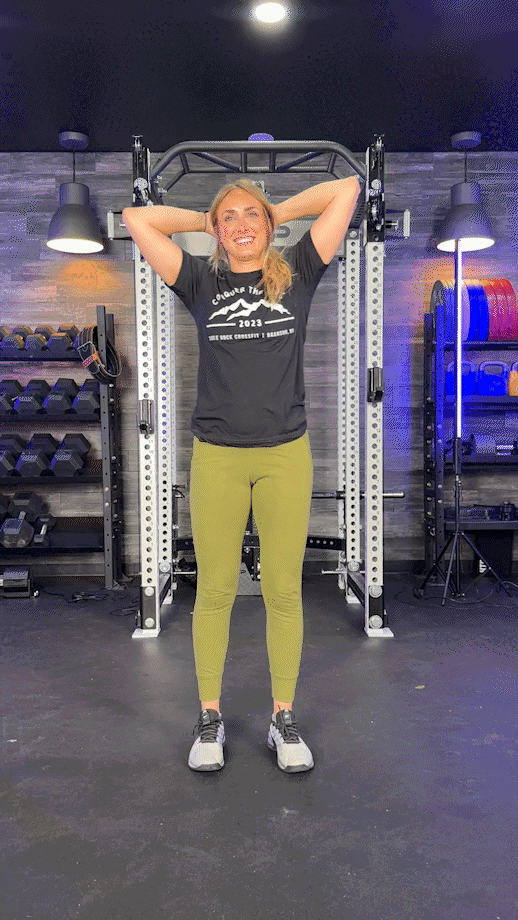
Windshield Wipers
Why it’s great: The windshield wipers exercise strengthen the obliques and rectus abdominis while improving the strength of your hip flexors and lower back muscles.
How to do it:
- Lie face up on the floor and bring your outstretched arms to shoulder level.
- Raise your legs vertically with your feet together and ensure your lower back is on the ground.
- Rotate your hips to the left and drop your feet toward the floor, stopping before they touch the ground.
- Return to the start and then rotate your hips to the right.
- Keep alternating sides for even reps.
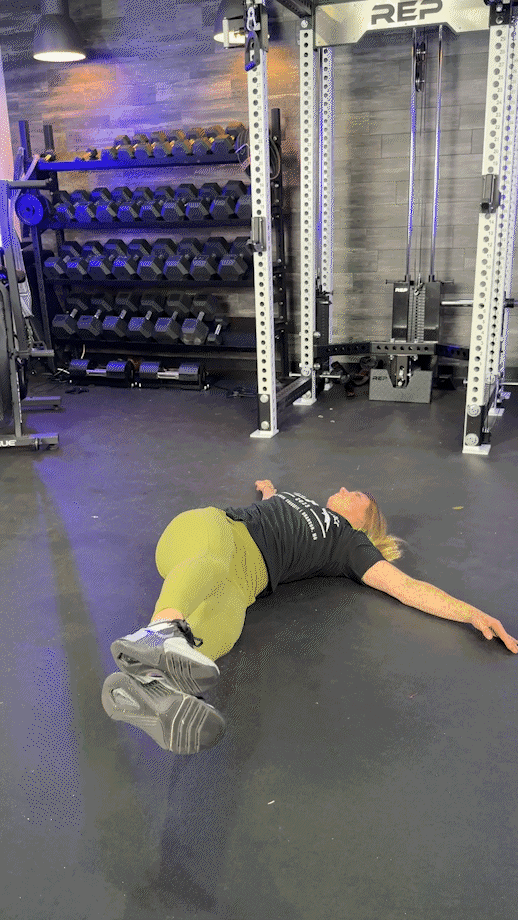
Plank Hip Dips
Why it’s great: Because you’re in the front plank position while performing hip dips, you are strengthening your entire core region while focusing on your obliques.
How to do it:
- Assume an elbow front plank position with your elbows underneath your shoulders, glutes engaged, and spine neutral.
- Rotate your hips to the left and lightly touch the ground.
- Then go back to the start and rotate your hips to the right.
- Keep alternating sides for even reps.
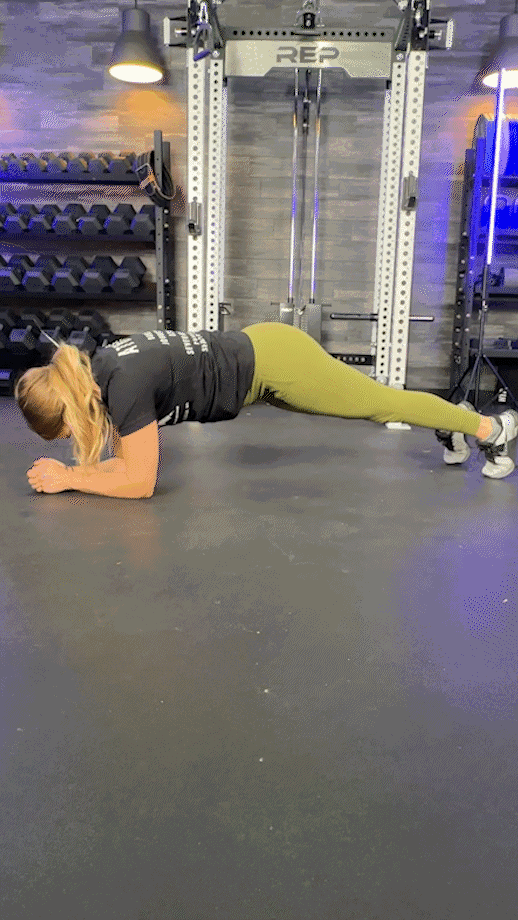
Woodchoppers
Why it’s great: No matter the variation of the woodchopper you do, it improves core strength and strengthens the hips and upper body dynamically at the same time.
How to do it:
Note: This is one variation only. There are multiple ones.
- Hold a light medicine ball or dumbbell in both hands at the side of your right hip.
- Then raise the ball/dumbbell across your body and over your left shoulder, like throwing a bucket of water over your shoulder.
- Bring it down across your body back to your right hip and repeat.
- Then switch to the opposite side and repeat for even repetitions.
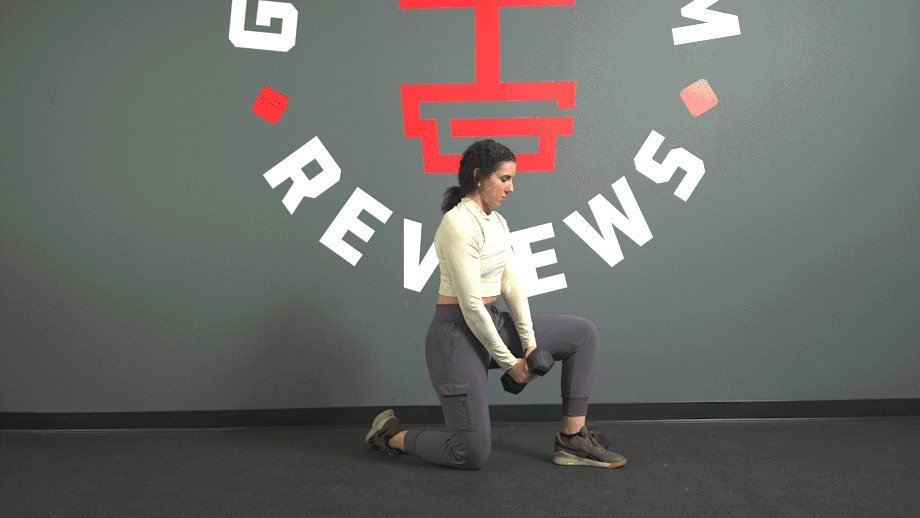
Russian Twists
Why it’s great: Russian twists, when performed with proper form, strengthen the obliques, hip flexors, and lower back and improve your balance and stability.
How to do it:
- Sit on the ground, holding a med ball in both hands.
- Sit upright with your shoulders down and chest up, lean back slightly, and lift your feet off the ground.
- Rotate to the right and touch the med ball to the ground, then rotate to the left and do the same.
- Alternate side for even repetitions.
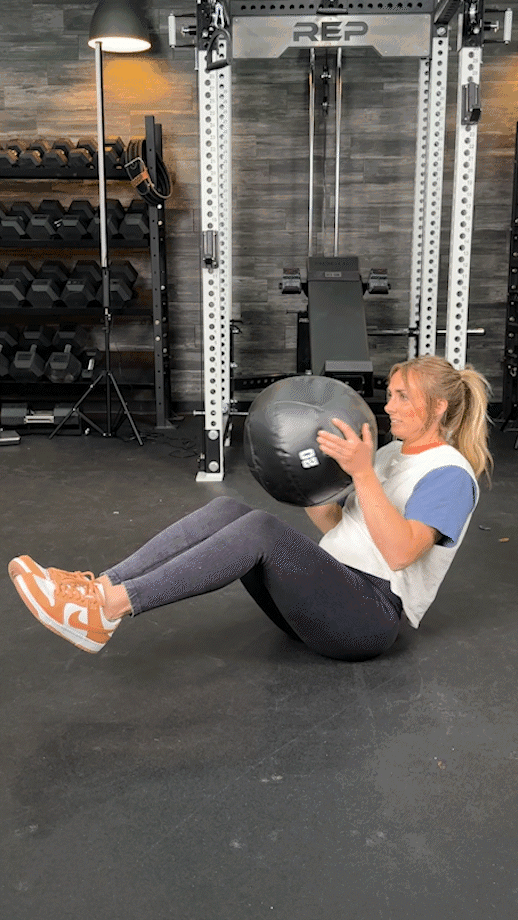
Medicine Ball Side Toss
Why it’s great: The med ball toss is one of a few exercises that trains your entire core dynamically and powerfully. Doing the throw to the side trains the core powerfully while placing more focus on the obliques and hips.
RELATED: Best Slam Balls
How to do it:
Note: You’re going to need a wall to throw against.
- Stand 2-4 feet away from a wall with your left side facing it, holding a med ball in both hands.
- Transfer your weight to your left hip while rotating your torso and throwing the ball against the wall. Remember, power comes from the hip rotation and not the arms.
- Catch the ball with both hands and reset and repeat.
- Repeat for an equal number of reps on the right side.
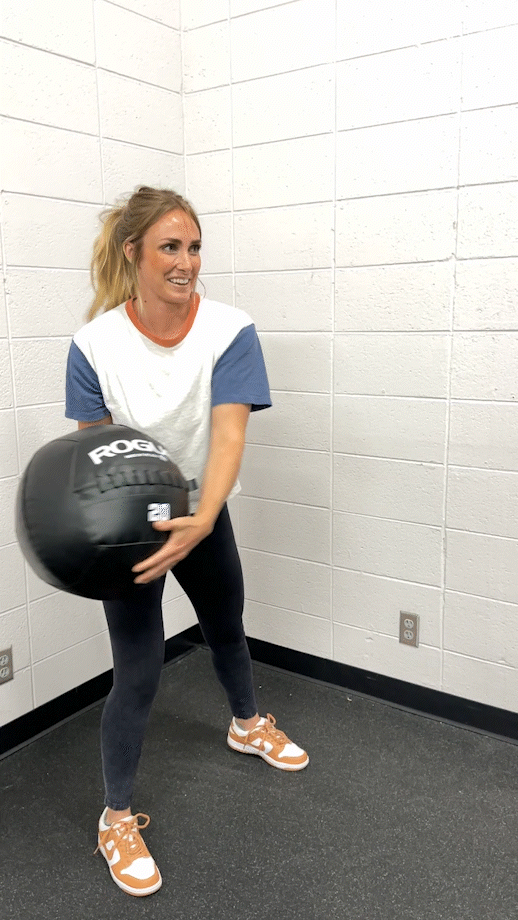
Spiderman Plank
Why it’s great: The Spiderman plank adds movement to your front plank, further strengthening core stability while focusing on your obliques and hip flexor strength.
How to do it:
- Assume an elbow front plank position with your elbows underneath your shoulders, glutes engaged, and spine neutral.
- Pick up your left foot and drive your left knee toward the outside of your left elbow.
- Return your left foot to the ground and repeat with the right knee toward the right elbow.
- Alternate sides for even reps.
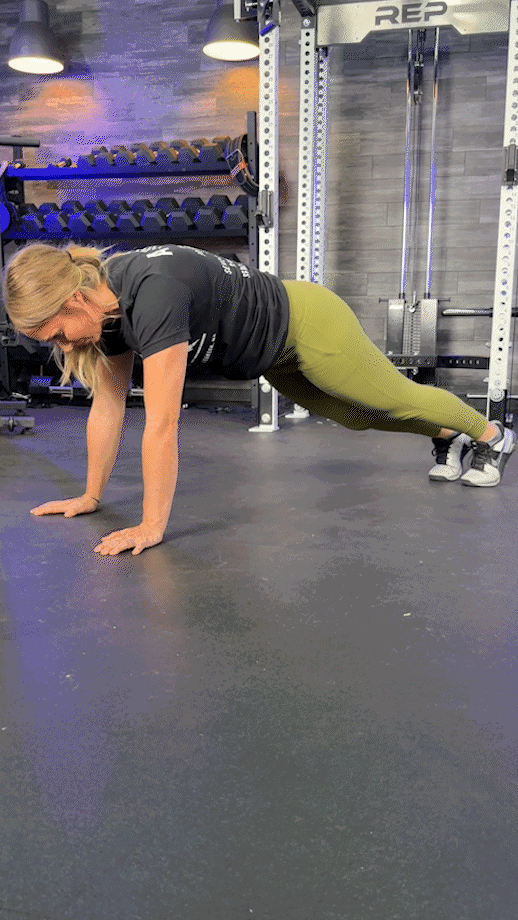
Landmine Rotations
Why it’s great: The landmine rotation exercise is one of those core exercises that has everything; not only does it strengthen the obliques dynamically, but it strengthens the deltoids and upper back, too.
RELATED: Best Budget Barbells
How to do it:
- Grip the end of the barbell with both hands, with a stance perpendicular to the landmine attachment.
- Step your feet shoulder-width apart, and extend your arms above chest height.
- Pivot with your right foot, and twist your upper body to the left, bringing the barbell toward your left hip.
- Explode back to the starting position and repeat, twisting to the opposite side.
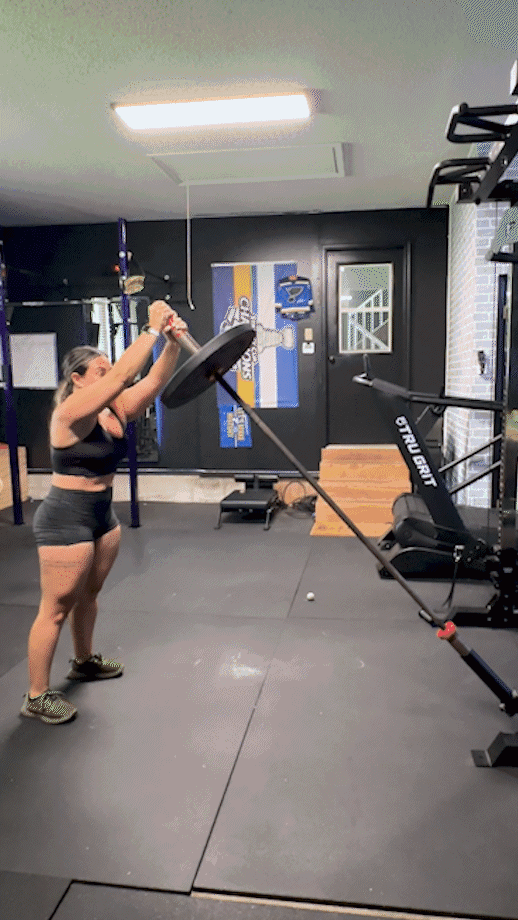
FAQs: Oblique Workouts
What is the best exercise to sculpt your obliques?
If only one best exercise for each body part existed, wouldn’t that be nice? But unfortunately, this is not the case. Because the obliques have five primary functions, it helps to train them a few different ways, like anti-lateral flexion (side planks), dynamic (bike crunch), and powerfully (med ball side toss).
Do oblique workouts slim your waist?
If you have more body fat than allows you to see your obliques, strengthening them can potentially help give your waist a more sleek appearance by giving you more definition. You need to exercise in combination with a calorie-controlled diet to see any significant change in your body composition, however.
How do you build your obliques?
Obliques are only visible when you have low body fat and enough muscle mass. If you want to build your obliques, you do it as you would with any other exercise—add resistance and progressively overload them to get them bigger and stronger.
Do obliques thicken your waist?
When you build and strengthen the oblique muscles, your waist can get wider, sometimes giving your torso a more “boxy” look—but you have to add quite a bit of muscle mass for that to happen.
Further reading
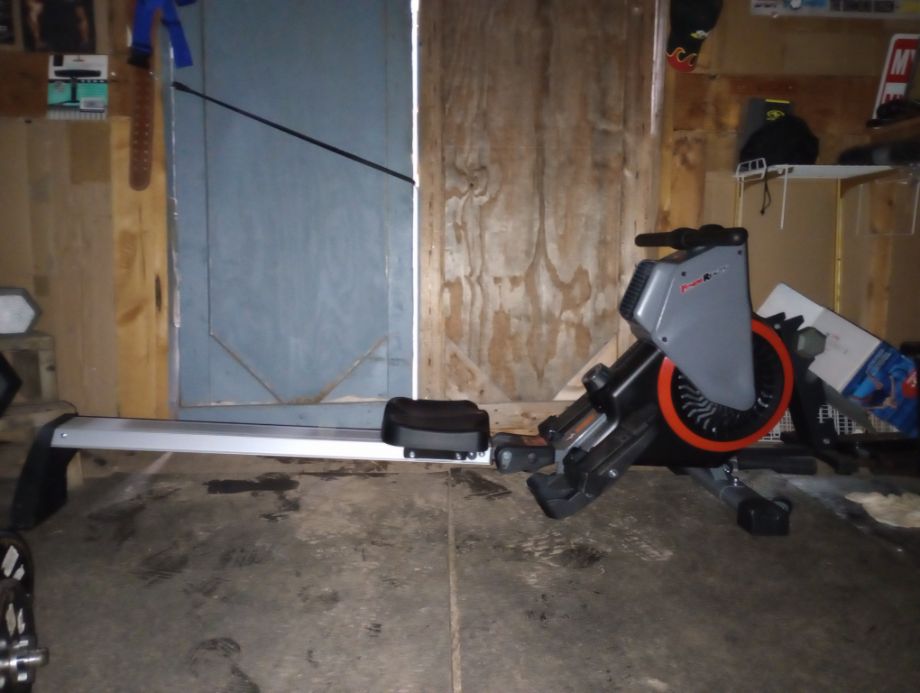
Our experts take a look and offer highly detailed Fitness Reality rowing machine reviews. Read more

We asked a certified fitness coach for the best leg exercises to build strength and bolster size for your quads, hamstrings, glutes and calves. Check them out! Read more

Check out the best protein bars for diabetics, focusing on high protein, low sugar, and high fiber to help regulate blood sugar and keep you satisfied. Read more

The rectus abdominis, or “six-pack” muscles, likely get all the love in your core workout. Do you know what doesn’t get a lot of love? If you guessed the obliques, collect $200 as you pass GO. The obliques need some attention, too. RELATED: Ab Roller Core WorkoutThis is about to change with the exercises below that you can use to create oblique workouts. The obliques, » Read more about: Oblique Workouts: Build a Stronger Core With These Exercises » Read more

